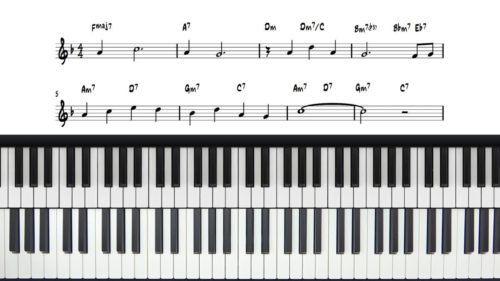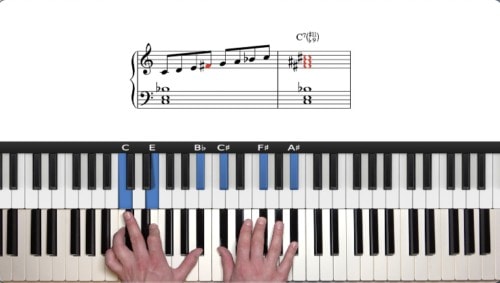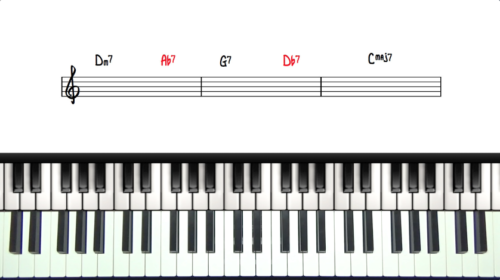Passing Chords & USTs
In this lesson we explore passing chord options that we can apply to the tune ‘The Nearness Of You’. A passing chord is when we add additional harmony into the original chord changes.
Passing chords are very effective when added into common progressions such as 251s and 3625s which feature heavily in this tune.
Upper Structure Triads
We can add more interesting colours and tensions to our passing chords using upper structure triad voicings. An upper structure triad is a triad that is played over a dominant chord to access specific colours and tensions.
The upper structure triad formulas can be found in the upper structure triad cheat sheet in the downloads section below.
Lesson Downloads
-
Upper Structure Cheat Sheet File Type: pdf
-
Passing Chords & Upper Structures File Type: pdf
Practice Tips
-
We have the creative freedom to change the original melody note to access colourful chord tensions. However, ensure that the original melody is still recognisable.
-
Add passing chords tastefully. It's possible to add passing chords throughout the form and so be mindful not to make the harmony too rich. Balance heavy harmonic sections with lighter voicings.
-
Study and memorise the upper structure triad cheat sheet found in the downloads section above. Keep this cheat sheet handy for quick and easy reference when playing through tunes.









Hi, Hayden, I’m trying to access this lesson and others in this course but I keep getting a message that the videos don’t exist. I’ve tried this on Safari, Chrome and my iPad, but the problem persists in all of them. Can you please fix this?
Hi Jorge,
This will be fixed today.
When adding a new course on the website, the video files are temporarily stored in Vimeo and then moved to our own video hosting before we officially launch the course. The Vimeo storage sometimes creates these errors.
If you check back towards the end of the day I will have completed this task and everything will play as expected.
I will be officially launching the course via email in the next few days and the PDF downloads are almost completed.
Cheers,
Hayden
Hi Jorge,
All of the videos have now been updated.
The PDF downloads should be ready in the next few days.
Cheers,
Hayden
Hi Hayden,
Thank you for taking the time to fix this so swiftly. Looking forward to the rest of the study materials. This is great course!
Cheers, Jorge
Hi, Hayden, sometimes it is great to go off in a bit of a tangent, very enjoyable and instructive lesson..
I noticed at the 1:37 mark on the video the graphic for the B7 chord is showing F as the bass note, I am sure it should be a B natural, no? I like the sound of the bass note then going down half a step to a Bb for the BbMajor7 chord
Hi Humberto,
Thanks for letting me know about this. Indeed the bass should show B natural as it is the tritone sub of F7. My mistake… I should have caught this in the review stage. I will pass it onto the editor to fix the typo.
Yes the added tension and colour from that passing chord is beautiful. We can also hit the F7sus for the melody note Bb and then play a B9 passing chord which has the 7th in the melody (the next melody note A) and that sounds lovely too.
Check out my performance of the tune in the opening chapter of this seminar: pianogroove.com/live-seminars/5-levels-for-arranging-tunes/ – at 2:03 you will see a really nice sequence over that measure that uses 3rds in the melody over the F7sus moving to a B9#11 and then resolving to Bbmaj7.
Have fun playing with that and enjoy!
Talk soon Humberto!
Cheers,
Hayden
Nice sequence indeed, thanks for the quick replly
Great lesson
Thanks Robert – I’m glad you found the lesson useful!
I’ll be adding more lessons to this course shortly.
Talk soon,
Hayden